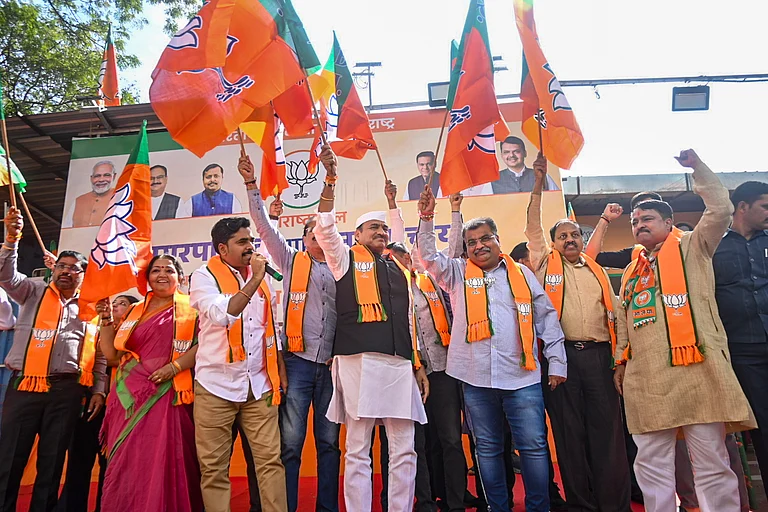What are the lessons SEBI, the stock exchanges, the RBI and the government need tolearn from the recent stockmarket-cum-banking crisis? What are the possibilities thatthese lessons, if learnt at all, will be diligently followed by these regulatoryauthorities?
Prevention, Not Cure: Lesson No. 1 is definitely that the authorities must adopt a"prevention is better than cure" policy at all times. If you don't wantartificial crashes, ensure that artificial booms also don't take place. But how do youprevent price manipulation and the conesequent crises? Says economist Ajay Shah:"Prevention is possible with a proper market design which has the spot market inrolling settlement mode and the hedging and leverage activities occurring in thederivatives market. In addition to stock lending, leverage is best imparted through margintrading where banks finance trades and keep the bought shares as collateral subject toprudential norms."
Ketan Parekh was able to rig prices in his select 20-30 stocks between April 1999 andMarch 2000 and also thereafter in a handful of other stocks (mainly media stocks) usingfour basic sources of leverage:
- The stock borrowing and lending mechanisms of the NSE and BSE;
- Banks' loans-against-shares schemes;
- The unofficial badla financiers of Calcutta; and
- Different exchanges having different trading cycles enabling an operator to switch positions between exchanges.
Parekh tapped all the four sources and traded in amounts which were in high multiplesof actual cash in his possession. Says Zubin Tampal, equity dealer with Jet AgeSecurities, an NSE and BSE member: "It was too easy to buy, say, Rs 100 worth ofshares, lend them to a bank or an unofficial badla financier in Calcutta and get Rs 50with which you bought more of the same stock, lend them again. The system allowed you tobuild such a dangerous pyramid of leveraged positions that breaking out of it unhurt wasalways going to be difficult."
The Lending Mechanisms: Leverage in the financial markets allows one to enter intotransactions by shelling out only a percentage of transaction value. Says Shah:"Leverage is not innately bad. It allows a person with knowledge but no capital totrade, which is not undesirable since it improves the information flow in themarket." However, leverage can attain dangerous levels when risk management systemsare absent or inadequate. Of the four elements that Parekh was using for leveraging, NSE'sand BSE's stock-and-money lending and borrowing system could be considered the only one tohave had reasonably adequate risk management systems.
Among the banks lending money against shares as collateral to operators, very few hadproper prudential norms with respect to the margin amount and the type of shares acceptedas collateral. This is one area where the RBI has to get proactive in terms of settingprudential norms for banks' lending to stockbrokers and other capital marketintermediaries, and then monitoring their exposures on a continuous basis.
In the build-up to the recent crisis, the RBI did not adequately fulfill its monitoringresponsibilities. Will it do so in the future? Maybe. Though looking at the currentpay-order scam and banks' lending to brokers without adequate and prudential checks, onemight say that the RBI did not quite learn from its regulatory lapses during the buildupto the 1992 Harshad Mehta-initiated banking-cum-stockmarket scam.
Casino Kolkata: The unofficial badla financiers of Calcutta were always known to bean excellent source for funds against shares. Since their operations were outside theofficial badla system of the CSE, SEBI may not have been able to take any legally viableaction against them even if it wanted to. What, however, many believe SEBI ought to havedone was to ensure that CSE's settlements and badla system was insulated from theunofficial market.
Which, in the recent crisis, was not to be. The CSE was plagued with over Rs 50 croreworth of defaults by its brokers due to their linkages with the badla financiers or lossesemanating from their own initiated dealings in the unofficial market. Can it recur? Itcould if SEBI's monitoring of CSE and its risk management systems continues to be off themark.
Switching Cycles: The fourth element in the huge leverage available to operatorswas the fact that they could keep their positions open for a week since the trading cycleswere weekly and they could prolong their positions further by switching it across the NSE,BSE and CSE which had their weekly trading cycles beginning and ending on different daysof the week.
This element can easily be taken care of in one shot if all the exchanges operatecompulsory rolling settlements where the trading cycle is only of one-day duration. Anoperator who then wants to keep positions open beyond one day without wanting to pay ordeliver for it will not be able to do so. He will also not be able to switch positionsbetween exchanges as all of them will be on daily trading cycles. Says Shah: "Thespot market should be a boring market where open buy and sell positions result in paymentand delivery. Leveraged trading's place is in the derivatives market where we would thenhave to focus all our efforts on obtaining a sound risk management system."
With leverage going to the derivatives market, the spot market will be easier to handle.Points out Shah: "Derivative is equal to leverage and leverage requires governanceplus brains in order to handle it. However, a rolling settlement plus derivativesarchitecture does give us a spot market that just works with low requirements ofgovernance and brains."
The good news is that SEBI, under pressure from the finance ministry, has now directedbourses to shift to compulsory rolling settlements from July. But there will be pressurefrom brokers to postpone its onset, citing a likely crash in trading volumes if it is madecompulsory. It remains to be seen whether the finance ministry and SEBI buckle under suchpressure.
Doing it Differently: Till such time as the market design improves and leverage isavailable under efficient risk management systems, what is it that regulatory bodies needto do differently? When prices were being rigged up last year by Parekh and his shellcompanies—and trading volumes were simultaneously skyrocketing—the first pointof identification was at the stock exchanges' surveillance departments. Ditto when priceswere being hammered down by bear operators and some fiis.
But since the operators were paying all the margins on time and making payment or givingdelivery, it may not always have been possible for stock exchanges to take direct actionagainst them. Moreover, stock exchanges do not have jurisdiction over the operator-clientsof the brokers. Only SEBI has. If the stock exchanges were passing on the suspected pricemanipulation cases to SEBI (it is not clear whether they were doing so diligently.NeitherNSE nor BSE responded to outlook's queries on the subject), then SEBI had thepowers to question the operator-clients and gauge the sincerity of the trades from theirresponse.
All this probably didn't happen. Had SEBI been after the operator-clients, it may perhapsnot have been able to establish price manipulation in some cases, but it would have atleast instilled caution among the operators which could have led to a reduction in theintensity of artificial booms and crashes. SEBI would have then also got a clear idea ofthe source of funds and acted accordingly. It is only now in the ensuing investigationsthat SEBI is finding the presence of slush funds from the underworld (see previousstory) in the markets. Further, company managements and even fund managers were seento be openly hobnobbing with Parekh which should have at least made it easy for SEBI toshortlist potential manipulated stocks and probe further.
If governance is slack, then rogue traders will have a field day. What are the chances ofhistory repeating itself then? Not much, that is, if the top brass at SEBI, RBI and eventhe government are fearless enough to attempt instilling discipline among the devianttraders, regardless of political, corporate or underworld connections.


























